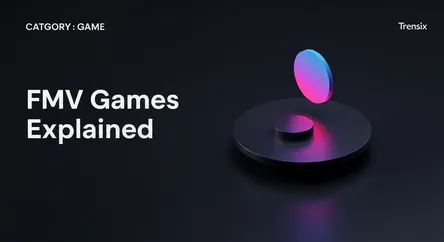Game
FMV Games Explained

Discover Full Motion Video (FMV) games, the interactive movie genre blending live-action footage with gameplay. Learn why they're making a comeback.
What is it?
FMV stands for Full Motion Video, a video game narrative technique that relies on pre-recorded, live-action video files rather than computer-generated graphics. Popularized during the CD-ROM era of the 1990s, these games play out like interactive movies where the player's choices influence the branching storyline. Classic examples include titles like Night Trap and Phantasmagoria, which aimed to deliver a cinematic experience by using real actors and sets, creating a distinct and sometimes campy genre that blended film and gaming.
Why is it trending?
The FMV genre is experiencing a modern renaissance, largely driven by indie developers. Advances in digital camera technology have made high-quality production more affordable and accessible than ever before. Furthermore, digital distribution platforms like Steam allow small studios to reach a global audience without a major publisher. Critically acclaimed titles such as Her Story, Telling Lies, and Immortality have showcased the genre's potential for complex, non-linear storytelling, attracting a new wave of players and creators alike.
How does it affect people?
FMV games offer a unique form of immersion that blurs the line between watching a film and playing a game. By using live actors, these games can evoke powerful emotional responses and create a sense of realism that traditional graphics may not achieve. Players often feel a more direct connection to the characters and the narrative, as their decisions have visible, real-world consequences acted out on screen. This creates a deeply personal and engaging experience, making players feel like an active director of the story rather than just a participant.